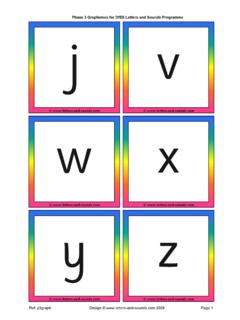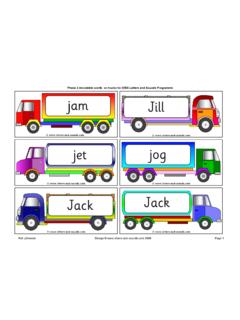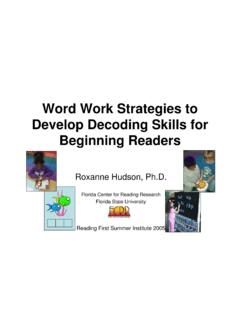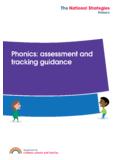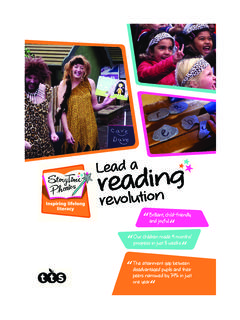Transcription of Order in which phonemes are introduced in ‘Letters and ...
1 Order in which phonemes are introduced in Letters and Sounds C. Birt. Phase 1 Seven Aspects: Three strands in each 1) tuning in to sounds 2) listening and remembering sounds 3) talking about sounds Oral segmenting and blending introduced in Aspect 7 Continues through all phases Phase 2 19 grapheme-phoneme correspondences Set 1: s a t p Set 2: i n m d Set 3: g o c k Set4: ck e u r Set 5: h b f, ff l, ll ss Phase 3 25 more grapheme-phoneme correspondences Set 6: j v w x Set 7: y z, zz qu Phase 3 two and three letter graphemes: ch, sh th ng ai ee igh oa oo ar or ur ow oi ear air ure er Phase 4 No new graphemes Consolidation of above to read and spell words containing adjacent consonants and to read and spell polysyllabic words-segmenting to spell, blending to read Phase 5 New graphemes, alternative pronunciations for those already known and alternative spellings for phonemes New graphemes: ay (day) ou (out) ie (tie) ea (east) oy (boy) ir (girl) ue (blue) aw (saw) wh (when) ph (photo) ew (new) oe (toe) au (Paul) Split digraphs a-e (make) e-e (these) i-e (like) o-e (home) u-e (rule) New pronunciations for known graphemes.
2 I (fin, find), o (hot, cold), c (cat, cent), g (got, giant), u (but, put (in south of England), ow (cow, blow), ie (tie, field), ea (eat, bread), er (farmer, her), a (hat, what), y (yes, by, very), ch (chin, school, chef), ou (out, shoulder, could, you) Alternative spellings for phonemes : See page 144- Letters and Sounds -Teaching alternative spellings for phonemes See page 154 Letters and Sounds -Bank of words and other materials/activities for Phase 5. Phase 6 (see also Y2/3 Spelling Programme and Spelling Bank) Consolidation of all of above Children apply skills and knowledge learned above to become fluent readers and increasingly accurate spellers. Past tense words Adding Suffixes/prefixes to make longer words Tricky bits in words and use of memory strategies.)
